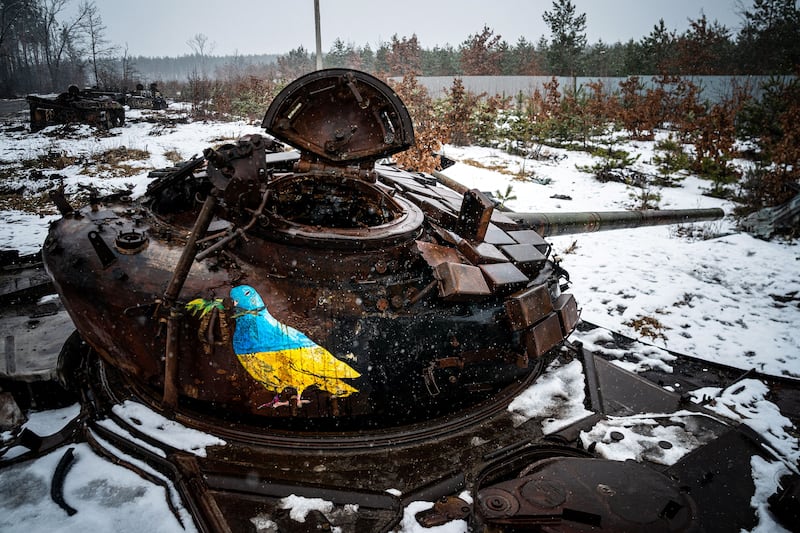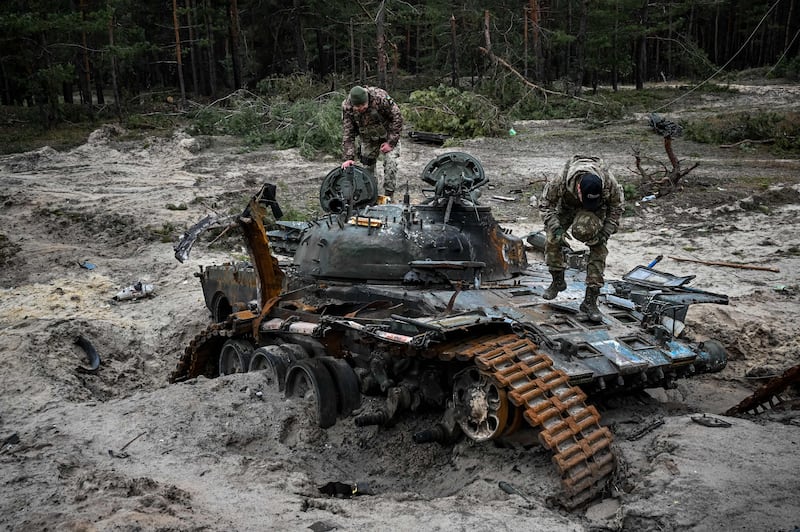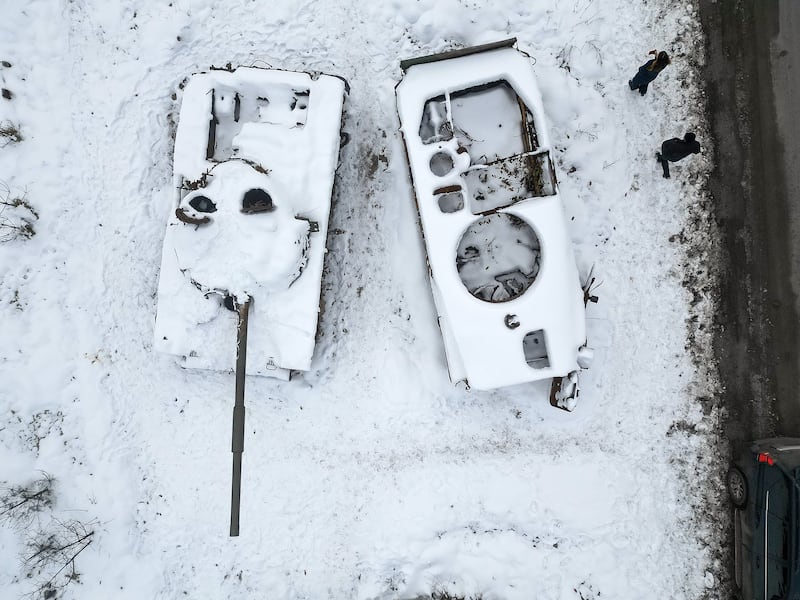The first task is to wipe off or cover up the Z, says Anatoly (44), of the call sign infamously daubed on Russian hardware involved in the war in Ukraine. “We don’t want friendly fire later on.” Then the mechanics get to work.
In a secret location in Ukraine, within a vast warehouse that could be mistaken for a tank graveyard, what was once Russian – Soviet, in many cases – is being turned Ukrainian.
All the headlines have recently been made by the decision of Germany and a host of others to supply Ukraine with western heavy armour: Leopard 2s, Challengers and Abrams.
The names have become familiar and they may have the technical cutting-edge and firepower to turn the course of Ukraine’s war, when they arrive and if in sufficient numbers.
But for all the efforts of the Nato allies, it is Russia that is unwittingly, and yet by some margin, Ukraine’s biggest donor of tanks today.
Oryx, the open-source Dutch intelligence defence analysis website, has collected photographs of 546 captured Russian tanks. It will be just a fraction of the total haul that were either abandoned by the fleeing Russian forces or seized in bloody battle.

Admittedly the trophies do not always turn up in tip-top condition.
Gesturing towards a T-72B3, covered in dry leaves, and bearing evidence of battle in the form of warped and battered armour, Anatoly proudly boasts that it is the most recent upgrade of the old Soviet T-72 tank.
It was brought into the facility, which lies just a few miles from the front lines, by the 54th brigade from the eastern Donetsk region, four weeks ago. “It took a direct hit on its turret,” says Anatoly. “The firing system was damaged too.”
They plan to get it back on its tracks in swift time, with added armour. There is little time for sentiment. Did Russian soldiers die in it? “I don’t know, I suppose so. There were arms and legs in it. Lots of blood.”
In some cases the Ukrainian army has set about getting such vehicles back on the field of battle under their flag. “But the state is busy repairing Ukrainian tanks,” says Roman Sinicyn (37), a co-ordinator at the Serhiy Prytula Foundation, a charity managing this operation in partnership with an engineering company whose name is being withheld to avoid identification of the plant site.
As a result, civil society has stepped in. A host of private companies have set aside their usual business to get in the game of refurbishing killing machines: the tanks, armoured vehicles, missile systems and other lethal hardware left behind.

These operations are often funded through donations. The Prytula Foundation, one of the largest organisations crowdfunding the purchase of military equipment, has invested €223,000 in this facility. “It is not a lot of money,” says Bohdan Ostapchuk (30), who is leading on tank refurbishment for the Prytula Foundation.
It has, however, borne deadly fruit: seven tanks back into battle, a command vehicle, a Hurricane rocket system, a multiple rocket system, an infantry transport vehicle and a host of armoured vehicles, so far.
Their destinations are a roll-call of Ukraine’s deadliest hot spots: Bakhmut, Kramatorsk, Luhansk, Svatove, to name a few.
The liberation of the Kharkiv region, in northeast Ukraine, last May was the high point in the hunt for battlefield treasure, as the Russian forces panicked in retreat. “It was like walking into a big, big shop where you can walk through and say, ‘I will have this one, and this one,’” says Ostapchuk.
The mistake was not repeated when the Kremlin ordered the retreat in the southern Kherson region before Christmas, but there remains a healthy supply of vehicles coming through the doors. They are, however, often of an older model, the mechanics note.
Pointing to a former personnel carrier brought in by Ukraine’s 46th airborne brigade from Soledar, the eastern Ukrainian city recently captured by Russia, Anatoly says it was probably built somewhere between 1982 and 1987.

The same goes for a Soviet-era Shturm S model anti-tank missile carrier that bears the O sign of the Russian marines on it side. It went over a mine near Vuhledar in the Donetsk region and was abandoned.
Then there is the T62 Soviet tank, likely dating from 1970 or so, brought back by the 128th mountain brigade from Kherson, three months ago, at the time of the Ukrainian counteroffensive there.
“This old tank is no good for war,” says Anatoly, “so we have cut off the top of it, the turret and we are going to turn it into an evacuation vehicle that can pull heavy armoured tanks when they get stuck.”
The Prytula Foundation has contacts across the Ukrainian armed forces as a result of also being a supplier of smaller equipment, such as thermal imaging goggles, drones and medical packs, and so spare parts can be summoned up relatively easily. “There is a database in his head,” says Sinicyn pointing to Ostapchuk.
The noise of the metal presses, soldering and hammering, along with the heavy smell of tank exhaust fumes makes this a difficult place to work. It is cold, dirty. There is the constant threat of Russia identifying and destroying it. They have between 30 and 50 staff working here at any point, seven days a week among the cylinders, cannibalised engines and piles of tyres and tracks.
But if there is something Steptoe and Son about the operation, with the rag and bone appearance of the BBC sitcom of the 1960s and 1970s, there is more than an element of the US television series, The A-Team, to their work, with ever more ingenious modifications being made, as they acquire know-how.
There is a sense of mission. Sometimes they find papers and personal effects belonging to the former Russian owners inside the vehicles. They are thrown away, not given a second thought. How does Anatoly feel about working around the tanks and armoured vehicles sent out to kill Ukrainian soldiers? “I am just glad to be getting them for free.” – Guardian













